Jobs & Education
Understanding SDLC Models In Detail 2024

What are SDLC Models?
In software development, SDLC models are similar to roadmaps that guide the process from start to finish. They help development teams work in a properly organized way and outline a clear path throughout the development process.
The software development life cycle has different models with each having its unique strength. Some popular SDLC models include:
- Waterfall Model
- Agile Model
- Iterative Model
- Spiral Model
- V-Model
- RAD Model
- Big Bang Model
In the article at TechloSet, we are going to explain these models in detail. So, without wasting any time let's start understanding each model.
A Comprehensive Guide to SDLC Models
1. Waterfall Model
The waterfall model is used in the software development life cycle to develop a system with a sequential and linear approach. This model is basically a breakdown of different development activities into sequential and linear phases.
These phases are passed down onto each other and each phase depends on the deliverables of the previous one. The typical phases of the waterfall model include:
- Requirements Gathering and Analysis: In this phase, project requirements are gathered from stakeholders and analyzed to understand the scope of the project.
- System Design: Based on the requirements gathered in the previous phase, the system architecture and design are developed. This includes designing the overall system structure, defining functionalities, and creating system specifications.
- Implementation (Coding): Once the design is finalized, the development team starts coding the software according to the specifications outlined in the design phase.
- Testing: After the code is written, the software undergoes testing to identify and rectify any bugs. Testing can include unit testing, integration testing, system testing, and acceptance testing.
- Deployment: Once the software is thoroughly tested and approved, it is deployed to the production environment or you can say released to the end users.
- Maintenance: After deployment, the software enters the maintenance phase, where updates, patches, and enhancements are made to ensure its continued functionality and relevance.
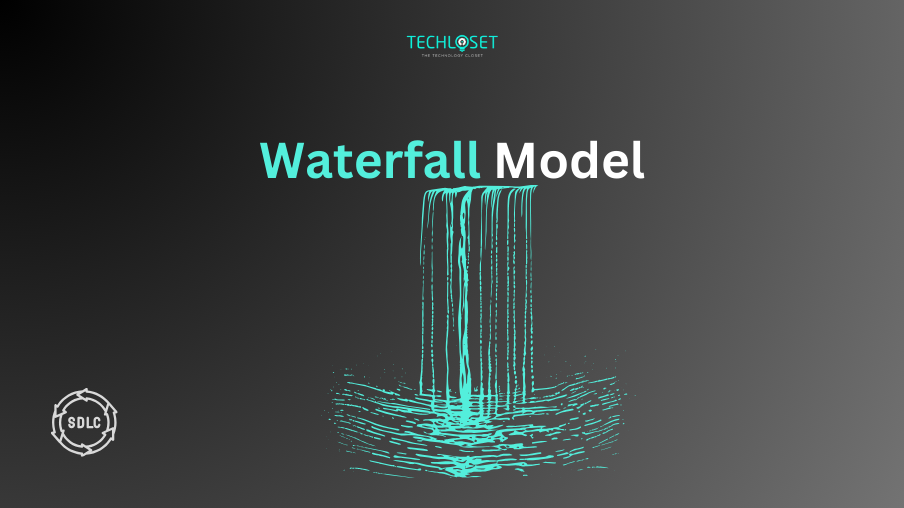
Advantages and Disadvantages of the Waterfall SDLC Model
Advantages:
- Clear and well-defined stages.
- Easy to understand and manage.
- Suitable for small projects with stable requirements.
Disadvantages:
- Limited flexibility for changes.
- High risk of customer dissatisfaction if requirements are misunderstood.
2. Agile Model
The Agile model is a software development methodology that follows best practices for modeling and documentation. It is also an iterative and incremental approach to efficient software development.
This SDLC model focuses on flexibly delivering high-quality software. It helps in responding to changes and feedback from customers or stakeholders throughout the entire development process.
Some key principles of the Agile SDLC model include:
- Iterative Development: Instead of developing the entire software product in one go, Agile divides the project into small increments or iterations, often called sprints. Each iteration results in a potentially shippable product increment.
- Customer Collaboration: Agile encourages close collaboration between developers and customers throughout development. Regular feedback from customers helps ensure that the product meets their needs and expectations.
- Adaptability: Agile embraces change and welcomes evolving requirements, even late in the development process. The ability to respond to change quickly is a core tenet of Agile methodologies.
- Cross-Functional Teams: Agile teams are small, self-organizing, cross-functional, and have diverse skills to complete software development.
- Continuous Integration and Testing: Agile promotes continuous integration and testing throughout the development cycle. This will help in ensuring that the software remains functional and meets quality standards at all times.
- Transparent Communication: Agile emphasizes transparent communication with teams and stakeholders through daily stand-ups and different sprint reviews.
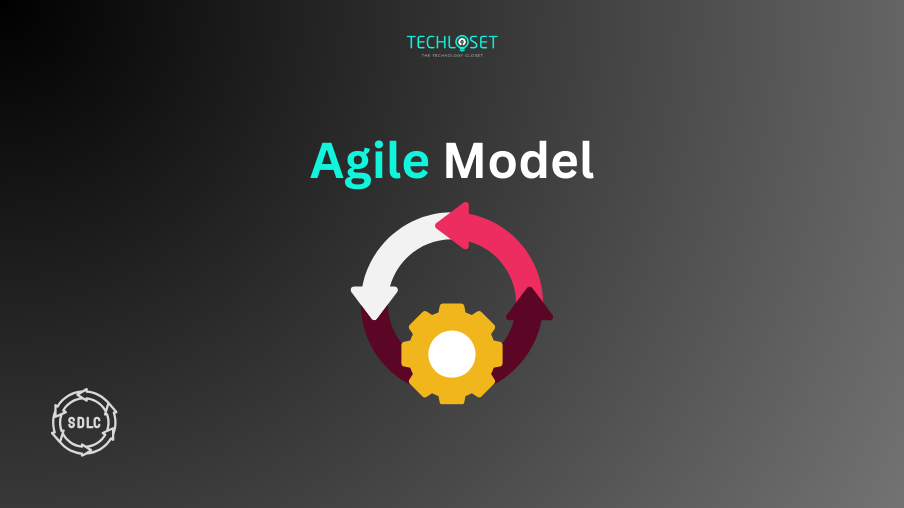
Advantages and Disadvantages of Agile Model
Advantages:
- Flexibility to accommodate changing requirements.
- Enhanced collaboration between development teams and stakeholders.
- Early and frequent delivery of working software.
Disadvantages:
- Requires active involvement and commitment from stakeholders.
- Lack of comprehensive documentation may lead to knowledge gaps.
3. Iterative Model
This SDLC model is a software development approach that breaks the development process into smaller iterations. Each iteration involves the development of a subset of the software’s features.
After each iteration, the software is evaluated feedback is incorporated into subsequent iterations.
Some key characteristics of Iterative SDLC model are:
- Incremental Development: The software is developed incrementally, with each iteration adding new features or enhancing existing ones.
- Repetition: The development process is repetitive where each iteration follows a similar sequence of activities, such as requirements analysis, design, implementation, testing, and deployment.
- Feedback Loop: Feedback from users, stakeholders, and testing is collected at the end of each iteration and used to improve the software in subsequent iterations.
- Flexible and Adaptive: The iterative model is flexible and adaptive to changes in requirements. This helps in the easy incorporation of new features or modifications.
- Risk Management: Risks are identified and addressed throughout development, with each iteration reducing project risk.
- Parallel Development: Depending on the complexity of the project, multiple iterations may run in parallel for faster development and delivery.
- Prototyping: Prototyping is often used in the iterative model to quickly validate requirements and gather feedback from users.
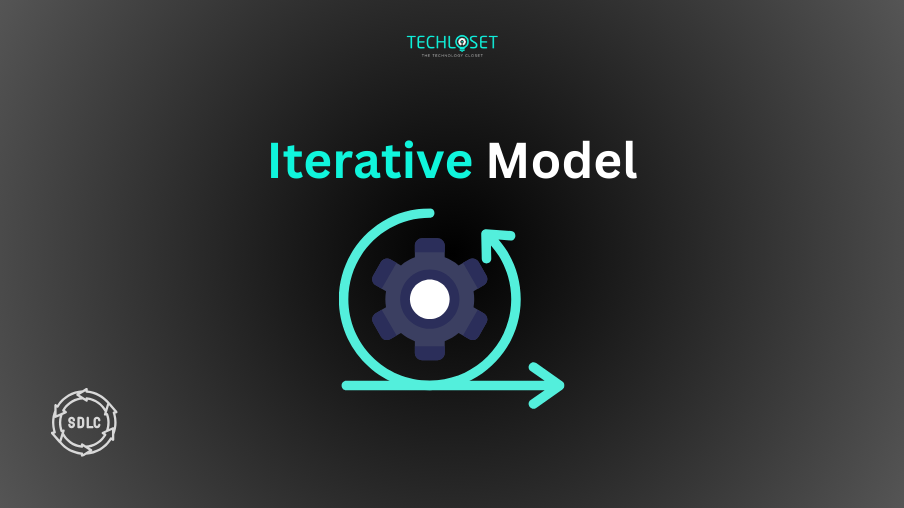
Advantages and Disadvantages of Iterative Model
Advantages:
- Adaptable to changing requirements.
- Early identification and mitigation of risks.
- Faster development with multiple iterations.
- Improvement: Iterative refinement leads to enhanced quality.
Disadvantages:
- Project timelines and budgets may be uncertain.
- Management complexity increases with multiple iterations.
- Requires significant resources for testing and integration.
4. Spiral Model
The spiral model refers to a method used for risk management that combines the iterative model with the waterfall model. This SDLC model is normally represented as a spiral rather than as a linear sequence of activities. It is further divided into multiple loops where each loop represents a phase in the software development process.
Some phases of this model include:
- Planning: This phase involves establishing the objectives, constraints, and alternative solutions for the project. It also involves identifying potential risks and determining how they will be managed throughout the project.
- Risk Analysis: In this phase, risks are identified, analyzed, and mitigated. The main objective of this phase is to reduce the project risk to an acceptable level before proceeding to the next phase.
- Engineering: This phase involves developing the software incrementally. Each iteration of the spiral represents a cycle of designing, coding, testing, and integrating a portion of the software.
- Evaluation: After each iteration, the software is evaluated to ensure that it meets the specified requirements. This evaluation helps identify any defects or deficiencies that need to be addressed in subsequent iterations.
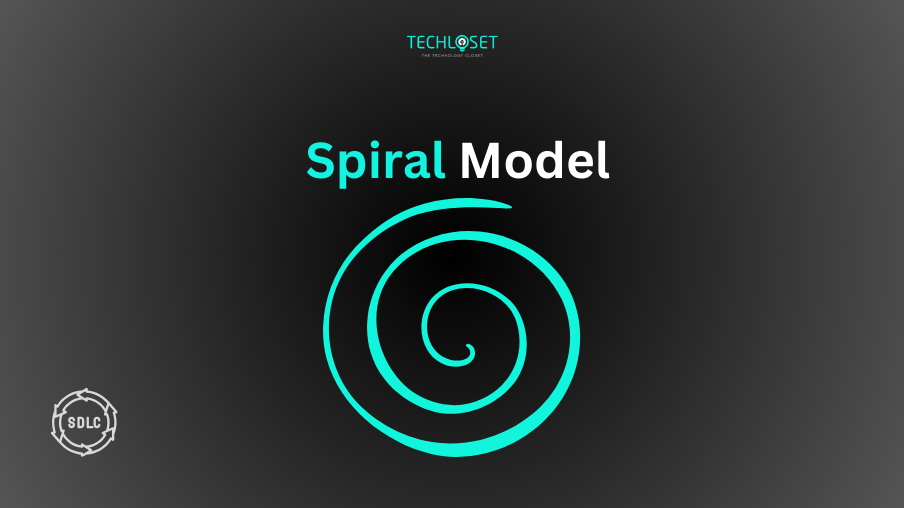
Advantages and Disadvantages of Spiral Model
Advantages:
- Early identification and mitigation of project risks.
- Allows for incremental development and prototyping.
- Flexibility to accommodate changes during the development process.
Disadvantages:
- Complex and resource-intensive.
- Requires extensive risk analysis and management.
5. V-Model
The V-model is a type of SDLC model where the process executes in a sequential V-shape manner. This model is also known as the verification and validation methodology that emphasizes the relationship between each phase of development and its corresponding testing phase.
In V-model, the development process progresses linearly from left to right with each stage having a corresponding testing phase on the right side. The stages include:
- Requirements Analysis: Gathering and documenting the requirements for the software.
- System Design: Creating a high-level design of the system architecture based on the requirements.
- Detailed Design: Developing detailed designs for the system components based on the high-level design.
- Implementation: Writing the actual code based on the detailed design.
- Unit Testing: Testing individual units or components of the software in isolation.
- Integration Testing: Testing the interaction between different units or components to ensure they work together as expected.
- System Testing: Testing the entire system as a whole to validate that it meets the specified requirements.
- User Acceptance Testing (UAT): Testing performed by end-users to ensure the software meets their needs and requirements.
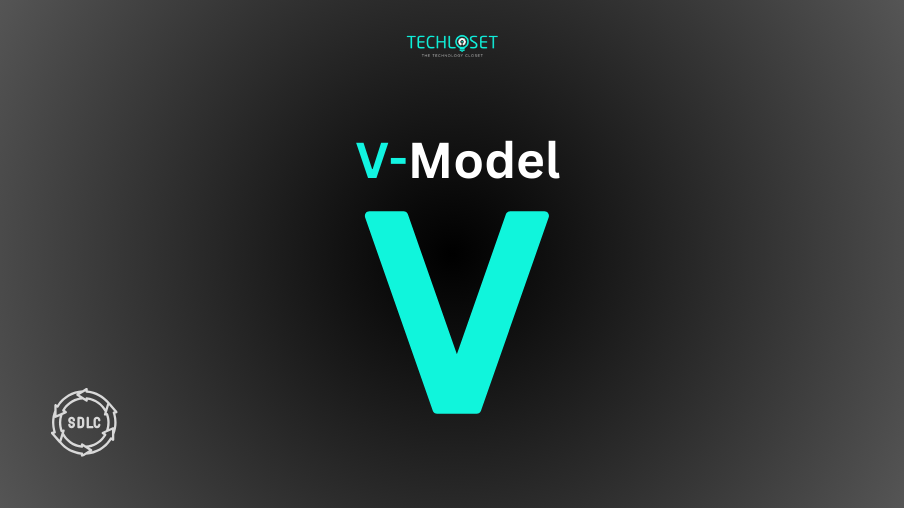
Advantages and Disadvantages of V-Model
Advantages:
- Clear and well-defined testing objectives for each development phase.
- Early detection of defects through parallel testing activities.
- Emphasizes quality assurance throughout the development lifecycle.
Disadvantages:
- Lack of flexibility for accommodating changes late in the development process.
- Requires extensive documentation and upfront planning.
6. RAD Model
RAD refers to the “Rapid Application Development” SDLC model. It is that type of software development methodology that prioritizes iterative development and rapid prototyping.
This model focuses on building prototypes and then refining them through user feedback. The RAD model involves the following phases:
- Requirements Planning: In this phase, the project team identifies and gathers requirements from stakeholders. These requirements are prioritized based on their importance to the project.
- User Design: This phase involves creating the user interface and system architecture. During this phase, prototypes are often developed to provide stakeholders with a visual representation of the proposed system.
- Construction: In this phase, developers build the software based on the designs created in the previous phase. The emphasis is on speed and efficiency, often utilizing pre-built components to accelerate development.
- Cutover: The cutover phase involves deploying the software into a production environment. This may include data migration and other activities necessary to transition from development to production.
- Feedback: Throughout the RAD process, feedback from users and stakeholders is collected and used to refine the software. This iterative approach allows for rapid adaptation to changing requirements and user needs.
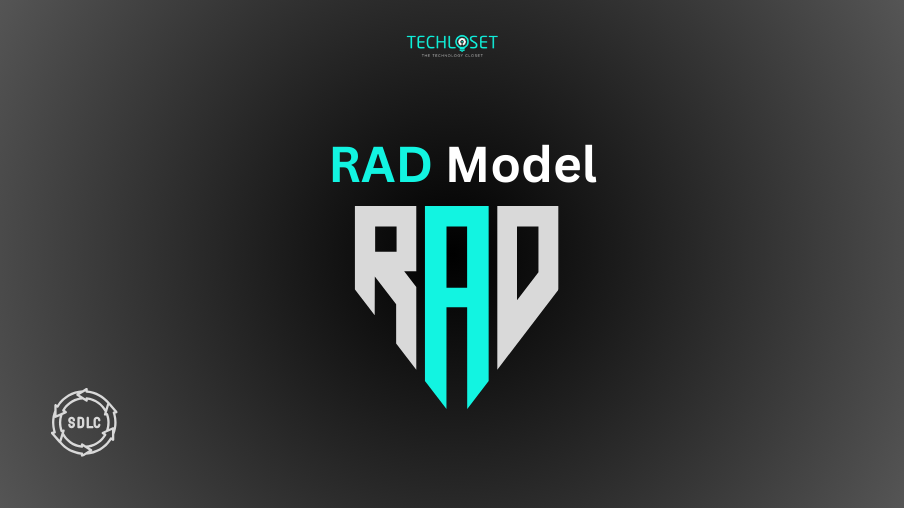
Advantages and Disadvantages of RAD Model
Advantages:
- Rapid development and deployment of prototypes.
- Enhanced user involvement and feedback throughout the development process.
- Flexible and adaptable to changing requirements.
- Potential for early detection and resolution of issues.
Disadvantages:
- Reliance on skilled developers and resources.
- May lead to scope creep if not managed effectively.
- Not suitable for projects with high-risk requirements.
7. Big Bang Model
The Big Band SDLC model is an unconventional approach to the software development process. Unlike other SDLC models, the Big Band model doesn’t follow a structured sequence of stages. It basically involves developing the software in an ad-hoc manner with often minimal planning and documentation.
Some key characteristics of this SDLC model are:
- No Structured Process: Unlike traditional SDLC models such as Waterfall or Agile, the Big Bang model doesn't have a defined structure for development phases.
- Rapid Development: The focus of this model is on quick development and deployment of the software product.
- High Risk: Due to the lack of a structured approach, the Big Bang model is considered high risk. Some issues may arise due to insufficient planning and coordination.
- Limited Control: Project managers may have limited control and visibility into the development process. This makes it challenging to manage and track progress effectively.
- Suited for Small Projects: The Big Bang model is more suitable for small projects where the requirements are well-understood, and there is a need for rapid development & deployment.
- Minimal Documentation: Since the emphasis is on speed, documentation may be minimal compared to other SDLC models.
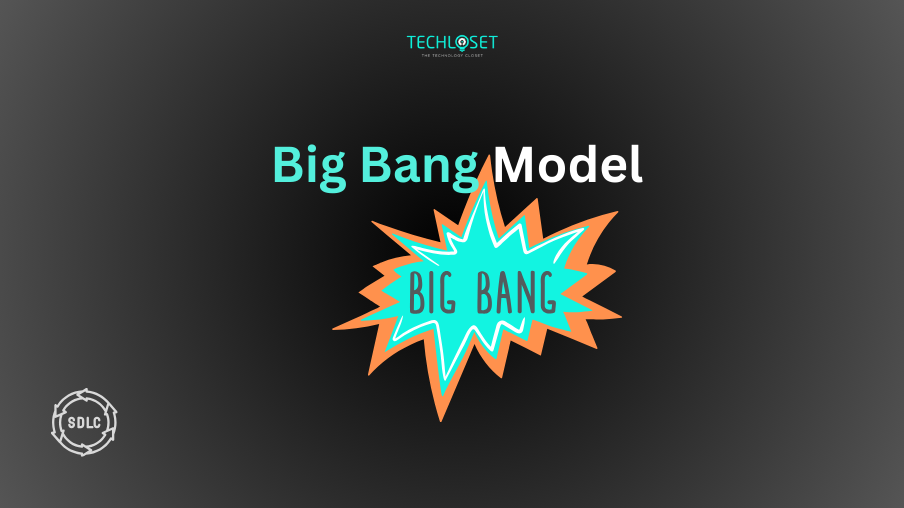
Advantages and Disadvantages of Big Bang Model
Advantages:
- All phases occur simultaneously, which speeds up the development process.
- Ability to adapt to iterations throughout development enhances project responsiveness.
- Well-suited for projects with clear requirements.
- Reduced administrative tasks lead to faster execution.
Disadvantages:
- Simultaneous execution increases the risk of project failure due to potential coordination issues.
- Stakeholders may struggle to manage progress effectively without a structured approach.
Conclusion
SDLC models are like roadmaps guiding software development. From Waterfall to Agile, each SDLC model offers unique approaches with different characteristics. This will help teams can choose the best software based on understanding, quality, and efficiency.





